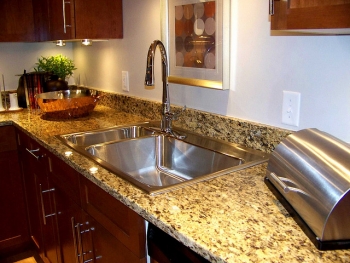Design History of the Humble Sink

When it comes to kitchen design the most important feature is not always the kitchen sink but this appliance does play a crucial role. With the advent of the dishwasher the sink’s former function as a place of washing up has been largely relegated to history. However, they do remain an integral part of the working life of the kitchen and are crucial for hygiene and food preparation. Their looks have changed over the years and despite their humble function they have been as much subjected to fashions as our other appliances and domestic interior designs.
Smashing times
The most traditional design for kitchen sinks has its roots in the Victorian era when mass produced ceramic sinks were commonplace. Replacing the traditional bucket option, these marvels of 19th century industrial production were rarely linked up to indoor plumbing – except in the grandest of houses. The most familiar is the butler’s sink which was deep and usually set into a worktop. In sculleries and pantries a shallower version could be found, placed on the surface itself. Before most homes had indoor running water these would feature a drain only to the outside and were filled from buckets or water boiled on a nearby range. Relatively cheap and easy to produce, these heavy and staining sinks were common in many homes until the 1960s. In recent years they’ve seen something of a comeback in popularity and suit older, traditional houses in particular, although they can work well in modern homes as a strong feature.
Steely Style
Stainless steel sinks became massively popular from the 1970s onwards. Lightweight, mass produced and affordable, they were also more robust in most senses than their ceramic predecessors. They had the advantage of incorporating a draining board for all that washing up and came ready fitted with kitchen mixer taps which could be fitted to a ready supply of hot and cold water. Double sinks rapidly became popular allowing the homeowner to multi-task – washing up and preparing food at the same time. Stainless steel sinks also became the sinks of choice for medical settings where hygiene is of the highest priority.
Modern, Sophisticated Surfaces
Today stainless steel for kitchen sinks remains a very popular material though it has been joined by composite stone materials which also feature many of the robust and hygienic qualities of stainless steel. Although the two main materials – stainless steel and ceramic – are still with us, the design and form of sinks continues to evolve. Steel remains one of the most popular and affordable options and despite the fact we’ve been largely freed from the hardships of washing up, the sink and it’s shining good looks remain a key part of any kitchen design.
Although tastes have changed and even our kitchen sinks have been subjected to changing fashions, stainless steel sinks remain one of the most popular and durable options.
